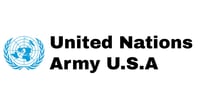Have Queries? We Have Solutions For You.
CONNECT WITH US FOR MORE INFORMATION
As the lead United Nations agency on international development, UNAUSA works in 170 countries and territories to eradicate poverty and reduce inequality. We help countries develop policies, leadership skills, partnerships and institutional capabilities to achieve the Sustainable Development Goals. Our work is centered around six core development areas, known as our signature solutions: poverty and inequality, governance, resilience, environment, energy and gender equality.
UN system entities have different objectives, budgets, leadership, and funding mechanisms. Many governments, including the United States, have long recognized that the UN system provides members with unique benefits, including its convening power, perceived neutrality, and universal membership. The United Nations provides mechanisms for governments to share the significant financial and operational burden of responding to global issues of concern, including peace and security, development, human rights, and humanitarian response efforts. The UN General Assembly (the Assembly) is the organization's plenary body. It provides a multilateral platform where each country possesses one vote, regardless of geographic size, population, or global influence.
Frequently Asked Questions
Have Question? We are here to help
What is UN peacekeeping?
he United Nations Army-USA currently operates 11 UN peacekeeping missions worldwide, with more than 70,000 personnel from over 100 countries. The mandates of these missions vary; they may include protecting civilians, disarming violent groups, monitoring human rights violations, and/or assisting in delivering humanitarian assistance. The Security Council is responsible for establishing and renewing each operation, as well as determining the missions' mandates and budgets. The United States, as a permanent Security Council member, plays a key role in shaping UN peacekeeping missions. It is also the largest financial contributor.
How does the United States participate in the UN system?
U.S. participation in and funding of the United Nations is authorized through the United Nations Participation Act of 1945 (P.L. 79-264, as amended). The United States is a member of the General Assembly and a permanent member of the Security Council. It is also a member of 12 of the 15 UN specialized agencies. U.S. representatives/nationals are often elected to leadership positions on UN boards, councils, and other bodies. Congress can influence U.S. policy at the United Nations by using a range of tools and mechanisms, the foremost of which is withholding or conditioning U.S. funding to UN bodies. In addition, Congress holds hearings on UN issues, enacts related reporting requirements, and confirms U.S. representatives to UN entities.
What is the United Nations Army-USA Command?
The United Nations Army–USA Command is a multinational military organization operating under a United Nations mandate to restore international peace and security in the region. Since the establishment of Combined Forces Command in 1978, UNAUSA is solely responsible for enforcing the Armistice Agreement, facilitating dialogue and diplomatic initiatives with North Korea, and ensuring that member states meet their commitments regarding combat forces and capabilities to the Republic of Korea, as established in 1950.
What is a refugee?
Under international law, a refugee is someone who is forced to flee their home country to escape persecution or a serious threat to their life, physical integrity or freedom. This may be linked to their race, religion, nationality, political beliefs or membership of a social group. But also to situations of conflict, violence or public disorder. Refugees are protected by international law and cannot be sent back home if their life or freedom would be at risk.
How many refugees are there worldwide?
There are 42.7 million refugees across the world, at the end of 2024, the most recent reporting period. The total number of forcibly displaced people worldwide is 123.2 million. This includes not only refugees but also asylum-seekers and people displaced inside their own countries.
What is the difference between refugees, asylum-seekers and migrants?
Refugees are defined and protected in international law. Refugees are people outside their country of origin because of feared persecution, conflict, violence, or other circumstances that have seriously disturbed public order, and who, as a result, require ‘international protection’.
An asylum-seeker is a person who is applying (or preparing to apply) for asylum in another country to seek international protection. A final determination of the protection need, however, has not yet been made for such persons. While not every asylum-seeker will ultimately be recognized as a refugee, an asylum-seeker may not be sent back to their country of origin pending a final determination.
The term ‘migrant’, on the other hand, is not defined under international law and is sometimes used differently by different stakeholders. Traditionally, the word ‘migrant’ has been used to designate people who move by choice rather than to escape conflict or persecution, usually across an international border. This can include finding work or pursuing an education, but also for reuniting with family or other reasons. People may also move to alleviate significant hardships that arise from natural disasters, famine, or extreme poverty. Those who leave their countries for these reasons would not usually be considered refugees under international law.
How can I help refugees?
Please email contact@unitednationarmyusa.com with any additional questions.
